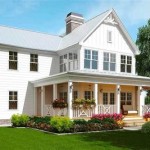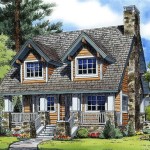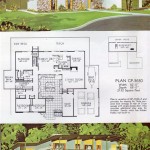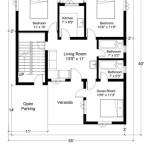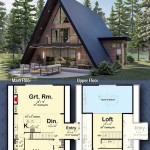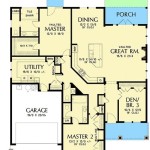Free Dog House Plans and Material List Printable: A Comprehensive Guide
Providing shelter for a canine companion is a fundamental responsibility for any dog owner. A well-constructed dog house offers protection from the elements, a sense of security, and a personal space for the animal. While commercially produced dog houses are readily available, building a dog house offers customization options and can potentially save money. The availability of free dog house plans and printable material lists makes this a feasible project for individuals with basic woodworking skills.
Understanding the Benefits of Using Free Dog House Plans
The primary advantage of utilizing free dog house plans is the cost savings associated with not purchasing commercially designed plans. These plans are often available online from various sources, including woodworking websites, home improvement retailers, and animal welfare organizations. Free plans provide a blueprint for constructing the dog house, including dimensions, assembly instructions, and material requirements. This eliminates the need for the owner to design the structure from scratch, saving time and effort. Furthermore, free plans allow for a preview of the finished product, enabling the owner to determine if the design meets their aesthetic preferences and the dog's specific needs.
However, it is crucial to acknowledge that the quality and completeness of free dog house plans can vary significantly. Some plans may lack detailed instructions, accurate dimensions, or complete material lists. Therefore, it is essential to carefully evaluate the chosen plan before commencing the project. Look for plans that include clear diagrams, step-by-step instructions, and a comprehensive list of materials with specific quantities. Reading reviews or seeking feedback from other individuals who have used the same plan can provide valuable insights into its accuracy and ease of use.
Another key benefit of utilizing free plans is the ability to adapt and customize the design to suit specific needs and preferences. The owner can modify the dimensions to accommodate the size of the dog, add insulation for improved thermal performance, or incorporate aesthetic features to complement the surrounding environment. This level of customization is often not possible with commercially produced dog houses, which are typically available in standard sizes and designs. Before making any modifications, it is important to consider the structural integrity of the design and ensure that the changes will not compromise the safety or durability of the dog house.
Essential Components of a Material List for Dog House Construction
A comprehensive material list is a critical component of any dog house plan, regardless of whether it is a free plan or a commercially purchased one. The material list should specify the types of materials required, the dimensions of each piece, and the quantity needed. This allows the owner to accurately estimate the cost of the project and to procure the necessary materials before beginning construction. Using a printable material list ensures all the necessary information is readily available at the point of material purchase.
Common materials included in a dog house material list typically include lumber, plywood, fasteners, and roofing materials. The type of lumber used will depend on the desired aesthetic appearance and the anticipated weather conditions. Pressure-treated lumber is often recommended for the base of the dog house to prevent rot and decay, especially in areas with high moisture levels. Plywood is commonly used for the walls and roof, providing a solid and weather-resistant enclosure.
The material list should specify the dimensions of each piece of lumber and plywood, including the thickness, width, and length. This information is essential for accurately cutting the materials to size and assembling the dog house according to the plan. The type and quantity of fasteners, such as nails, screws, and bolts, should also be clearly specified. Choosing the appropriate fasteners is crucial for ensuring the structural integrity of the dog house and preventing it from falling apart under stress.
The roofing material used for the dog house will depend on the climate and the budget of the owner. Asphalt shingles are a common choice, offering good durability and weather resistance at a relatively low cost. Other options include cedar shingles, metal roofing, and rolled roofing. The material list should specify the type and quantity of roofing material required, as well as any necessary accessories, such as roofing felt, drip edge, and flashing.
In addition to the basic materials, the material list may also include items such as insulation, paint, stain, and caulking. Insulation can be added to the walls and roof of the dog house to improve its energy efficiency and provide a more comfortable environment for the dog, particularly in extreme weather conditions. Paint or stain can be applied to protect the wood from the elements and to enhance its aesthetic appearance. Caulking can be used to seal any gaps or cracks in the dog house, preventing water from entering and causing damage.
Key Considerations When Selecting and Using Free Dog House Plans
The act of selecting the appropriate free dog house plan requires careful consideration of several factors. The size of the dog is paramount. A dog house that is too small will be uncomfortable and restrictive, while a dog house that is too large will not provide adequate insulation. The plan should specify the recommended dimensions for different dog sizes, and the owner should choose a plan that is appropriate for their dog's breed and weight. As a general guideline, the dog house should be large enough for the dog to stand up, turn around, and lie down comfortably.
The climate in which the dog house will be located is another crucial factor to consider. In cold climates, it is important to choose a plan that includes insulation and a small entrance to minimize heat loss. The entrance should also be positioned to protect the dog from drafts. In hot climates, it is important to choose a plan that provides adequate ventilation and shade. A light-colored roof can help to reflect sunlight and reduce the temperature inside the dog house. The construction materials should also be chosen to withstand the local weather conditions.
The skill level and available tools of the owner are also important considerations. Some dog house plans are more complex than others, requiring advanced woodworking skills and specialized tools. The owner should choose a plan that matches their abilities and resources. It is also important to consider the safety aspects of the project. When working with power tools, it is essential to wear appropriate safety gear, such as safety glasses, hearing protection, and gloves. The work area should be well-ventilated, and all tools should be in good working condition.
Before starting the construction process, it is advisable to thoroughly read the entire plan and familiarize oneself with the assembly instructions. Create a cutting list based on the material list and carefully cut all the pieces to size. Dry-fit the pieces together to ensure they fit properly before applying any glue or fasteners. Follow the assembly instructions carefully, paying attention to the order of operations and the proper alignment of the pieces. Regularly check for squareness and levelness to ensure the dog house is structurally sound.
Once the dog house is assembled, it is important to inspect it carefully for any sharp edges, splinters, or other potential hazards. Sand down any rough surfaces and apply a coat of sealant or paint to protect the wood from the elements. Provide a comfortable bedding material for the dog, such as straw, blankets, or a dog bed. Place the dog house in a sheltered location, away from direct sunlight, wind, and rain. Encourage the dog to use the dog house by placing treats or toys inside.
Regular maintenance is essential for ensuring the longevity and safety of the dog house. Inspect the dog house periodically for any signs of damage, such as cracks, rot, or loose fasteners. Repair any damage promptly to prevent it from worsening. Clean the dog house regularly to remove dirt, debris, and parasites. Provide fresh bedding material as needed to keep the dog comfortable and healthy.
In summary, utilizing free dog house plans and printable material lists offers a cost-effective and customizable approach to providing shelter for a canine companion. However, it is important to carefully evaluate the quality of the plan, select appropriate materials, and consider the size of the dog, the climate, and the skill level of the owner. By following these guidelines, owners can create a safe, comfortable, and durable dog house that will provide years of enjoyment for their beloved pets.

Large Dog House Plans Free Construct101

14 Diy Dog Houses How To Build A House Plans Blueprints

14 Diy Dog Houses How To Build A House Plans Blueprints
:strip_icc()/Beautiful-Pallet-Dog-House-with-Veranda-1-5a202f90494ec90037893a82.jpg?strip=all)
14 Free Diy Dog House Plans Anyone Can Build
:strip_icc()/IMG_2589-5a202f1c7d4be800191a3845.jpg?strip=all)
14 Free Diy Dog House Plans Anyone Can Build

Large Dog House Plans Free Construct101

Large Dog House Step By Plans Howtospecialist How To Build Diy

14 Diy Dog Houses How To Build A House Plans Blueprints

Large Dog House Plans Howtospecialist How To Build Step By Diy

Large Dog House Plans Myoutdoorplans
Related Posts


